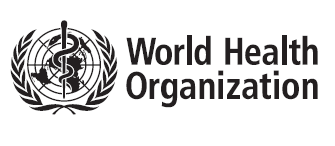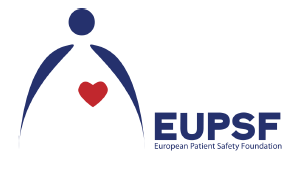'Kids Save Lives' statement has been endorsed by the World Health Organisation
The European Patient Safety Foundation (EUPSF) is very pleased to announce that the statement 'Kids Save Lives' has been endorsed by the World Health Organisation (WHO).
This statement highlights the importance of teaching CPR to all school children around the globe. The document reinforces the difference that early CPR can have on survival outcomes following sudden cardiac arrest (SCA) an issue that causes 2,000 deaths worldwide every day. By introducing just two hours of CPR teaching per year for all children over 12, the WHO believe that SCA survival rates would improve and in turn lead to improved global health.
Kids Save Lives – Training School Children in Cardiopulmonary Resuscitation Worldwide
A Statement from the European Patient Safety Foundation (EuPSF¹), the European Resuscitation Council (ERC²), the International Liaison Committee on Resuscitation (ILCOR³) and the World Federation of Societies of Anesthesiologists (WFSA⁴)
This statement has been endorsed by the World Health Organization (WHO) Sudden Cardiac Death, A Public Health Problem Sudden cardiac death is one of the major issues in global health care. In Europe and the U.S., at least 700,000 people die each year following sudden cardiac death with unsuccessful out-of-hospital cardiopulmonary resuscitation (CPR) [1,2]. This is 2,000 deaths every day. The same happens in many other areas of the world. Thus, sudden cardiac death is the third commonest killer after cancer and other cardiovascular diseases in industrialized nations [3]. Teaching CPR to all school children will therefore lead to a marked improvement in global health.
Following sudden cardiac arrest, the brain can only survive for 3-5 mins without oxygen. This is much less time than the emergency medical services take to arrive in almost all cases. Therefore, less than 1 out of 10 patients with out-of-hospital cardiac arrest survive today [4-7]. There is sound scientific evidence that immediate initiation of basic life support by lay bystanders improves the survival after out-of-hospital cardiac arrest by a factor of 2-4 [5-7]. Out-of-hospital cardiac arrest is witnessed in 60-80% [5-7]. Thus, lay resuscitation can fill the time gap between collapse and the arrival of the emergency medical services in most cases. Today, bystander CPR is delivered in less than 1 in 5 out-of-hospital cardiac arrests [4]. Increasing this rate will save 200,000 additional lives in Europe and in the U.S. every year, and far more worldwide. While educating the lay public in basic life support is clearly the most important way to increase survival in this area, it is difficult to reach the entire population with the training required, if programs are not obligatory. It is logical therefore to include resuscitation training in school programs. The American Heart Association advocated compulsory resuscitation training in American schools in 2011 [8], and countries in which resuscitation has been integrated into educational programs in schools report significantly higher resuscitation rates [4,9]. Thus one of the most important steps in increasing the rate of bystander resuscitation and improving survival worldwide is to educate all school children. This can be easily done by educating them – beginning at the age of 12 years – for just two hours per year [8-11]. School children at a young age have a less inhibited approach to resuscitation training and both medical professionals and teachers achieve success after appropriate training themselves [11].
The Way to Improve Survival
We recommend educating school children in resuscitation from the age of 12 years or earlier for 2 hours per year. If school children receive such training, they are also likely to teach this to their family at home – and they themselves will never forget. We will see not only an increase in the number of cardiac arrest survivors worldwide, but also the social benefits of enthusiastic and positive young people. They learn to help others. School children and teachers are important “multipliers” in both private and public settings and thus, in the longer term, the proportion of trained individuals in society will markedly increase, leading to an increase in the overall rate of lay resuscitation.
This concept is already very successful in Scandinavia. In Denmark, it was shown that the rate of bystander CPR nearly doubled after five years, with a threefold improvement in survival following out-of-hospital cardiac arrest over ten years [9]. A threefold improvement in survival cannot be achieved solely by improvements in professional medical care in this area.
- All groups of society can be reached. To achieve a statistically significant increase in the resuscitation results, it has been estimated that at least 15% of a population need to be trained and such numbers cannot be achieved by offering voluntary courses.
- Access to health-related information is often less adequate in the lower social groups, with the result that more cases of unsuccessfully treated cardiac arrest per capita occur in socially disadvantaged areas [12].
- A sense of responsibility can be firmly established at an early stage. Social skills – particularly if they are to be effective across social barriers – need to be established at an early point in the course of a child’s education.
- Altruism research has shown that schoolchildren have a less inhibited approach to resuscitation training while they are still pre-pubertal. Furthermore, the strongest factor inhibiting the taking of practical action in the real-life situation is a fear of making mistakes. This aspect of implementation can also be communicated much more naturally and easily during school time.
- The response to instruction is easier and better at a younger age. A more favorable attitude to learning is also reflected by the fact that practical training can be communicated in a more positive way.
- Embedding resuscitation in related school subjects such as biology, sports or health education is meaningful and possible.
Conclusion
Sudden cardiac death is one of the most frequent preventable causes of death in the industrialized world. In countries with organized emergency medical services, more lives could be saved by increasing the lay bystander resuscitation rate. Providing resuscitation training in schools has measurable effects, and by a “multiplier effect” it can increase the lay bystander resuscitation rate and the survival rate. The earlier such instruction in resuscitation is started, the more sustainable the training will be.The message to the public is clear: successful CPR is easy to undertake and straightforward to teach.
Lay people cannot do anything wrong – the only wrong thing would be to do nothing.
It can easily be done by everyone, saving hundred thousands of lives each year all over the world.
The supporting organisations have particular expertise in CPR delivery and training and fully endorse this statement.
Supporting Organisations
-
¹
- The European Patient Safety Foundation is a multi-disciplinary non-profit foundation composed of medical associations, policy makers, clinicians, healthcare professionals, med-tech industry and patient advocates.. ²
- The European Resuscitation Council is an interdisciplinary multi-specialty non-profit organisation for resuscitation medicine and emergency medical care. It is the umbrella organisation of 33 national resuscitation councils from Europe, Asia and Africa.. ³
- The International Liaison Committee on Resuscitation (ILCOR) is a forum for liaison between principal resuscitation organisations worldwide: American Heart Association, Australian and New Zealand Council of Resuscitation, European Resuscitation Council, Heart and Stroke Foundation of Canada, InterAmerican Heart Foundation, Resuscitation Council of South Africa, Resuscitation Council of Asia. ⁴
- The World Federation of Societies of Anaesthesiologists is a global network of 120 national societies of anaesthesiologists
References
- Anonymous, European cardiovascular disease statistics 2012.
- Berdowski J, Berg RA, Tijssen JG et al. (2010) Global incidences of out-ofhospital. cardiac arrest and survival rates: Systematic review of 67 prospective studies. Resuscitation 81:1479-1487.
- Taniguchi D, Baernstein A, Nichol G. Cardiac arrest: a public health perspective. Emerg Med Clin North Am 2012; 30: 1–12..
- Gräsner JT, Bossaert L (2013) Epidemiology and management of cardiac arrest: what registries are revealing. Best practice & research. Clinical anaesthesiology 27:293-306 .
- Holmberg M, Holmberg S, Herlitz J. Effect of bystander cardiopulmonary resuscitation in out-of-hospital cardiac arrest patients in Sweden. Resuscitation 2000; 47: 59–70..
- Herlitz J, Bang A, Gunnarsson J et al. (2003) Factors associated with survival to hospital discharge among patients hospitalised alive after out of hospital cardiac arrest: change in outcome over 20 years in the community of Goteborg, Sweden. Heart 89:25-30 .
- Böttiger BW, Grabner C, Bauer H, Bode C, Weber T, Motsch J, Martin E. Long term outcome after out-of-hospital cardiac arrest with physician staffed emergency medical services: the Utstein style applied to a midsized urban/suburban area. Heart 1999; 82: 674-9..
- Cave DM, Aufderheide TP, Beeson J, et al. Importance and implementation of training in cardiopulmonary resuscitation and automated external defibrillation in schools: a science advisory from the American Heart Association. Circulation 2011; 123: 691–706. .
- Wissenberg M, Lippert FK, Folke F et al. (2013) Association of national initiatives to improve cardiac arrest management with rates of bystander intervention and patient survival after out-of-hospital cardiac arrest. JAMA 310:1377-1384 .
- Plant N, Taylor K. How best to teach CPR to schoolchildren: a systematic review. Resuscitation 2013; 84: 415–21..
- Bohn A, Van Aken HK, Möllhoff T, Wienzek H, Kimmeyer P, Wild E, Döpker S, Lukas RP, Weber TP. Teaching resuscitation in schools: annual tuition by trained teachers is effective starting at age 10. A four-year prospective cohort study. Resuscitation. 2012; 83: 619-25.
- Reinier K, Thomas E, Andrusiek DL, et al. Resuscitation Outcomes Consortium Investigators. Socioeconomic status and incidence of sudden cardiac arrest. SMAJ 2011; 183:1705-12

